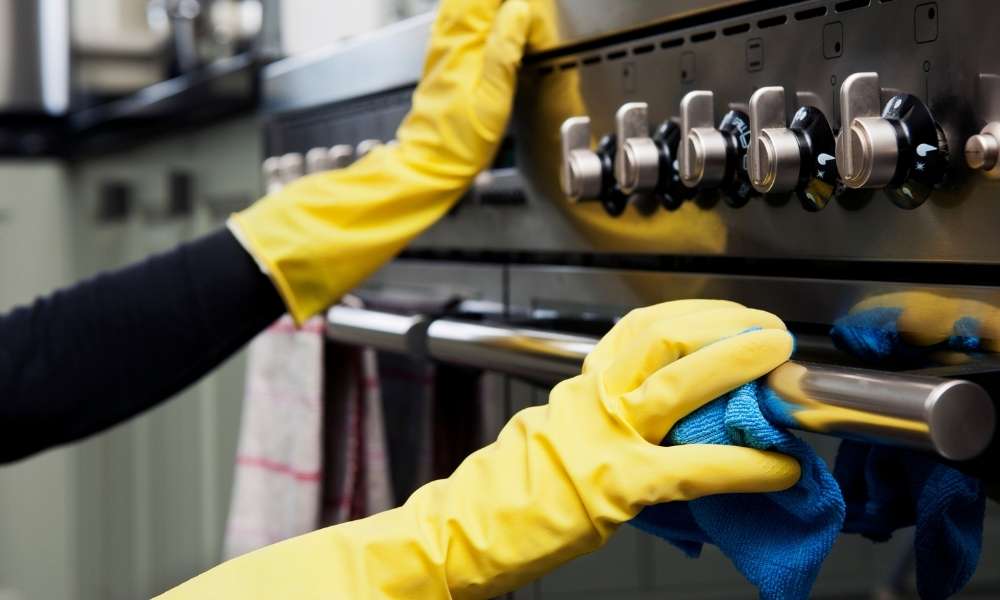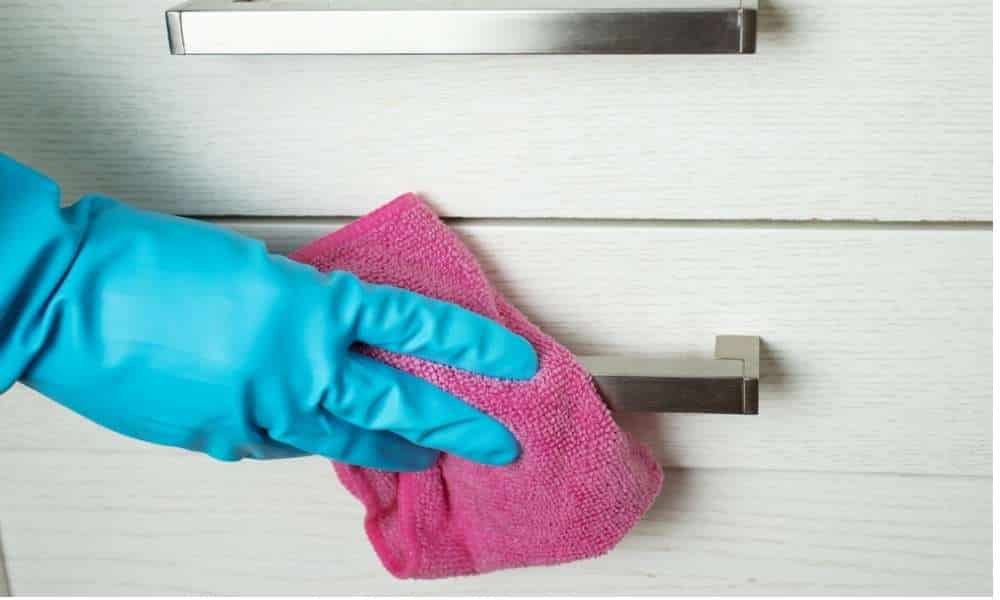Rust on your Blackstone griddle? Been there, Done that—it’s frustrating! One day, You’re flipping pancakes; the next, you’re staring at a patchy, orange mess. But don’t worry, it’s fixable. Knowing how to remove rust and re-season a Blackstone griddle can bring it back to life, Making it as good as new. I’ve gone through the trial and error (so you don’t have to), And I’ll walk you through exactly how to get rust off Blackstone surfaces, how to clean a Blackstone griddle with rust, And how to reseason a Blackstone griddle like a pro. Stick with me, And let’s rescue that griddle together!
Why Does a Blackstone Griddle Rust?
Rust on your Blackstone griddle? It happens faster than you think! One day, It’s smooth and ready to cook. The next, there’s an orange-brown layer staring back at you. But don’t worry—rust isn’t permanent. It just means your griddle needs better care.
Understanding Rust Formation
Rust forms when metal meets moisture and oxygen. If your griddle sits outside uncovered or isn’t seasoned properly, It becomes an easy target. Even high humidity can cause rust, especially in coastal or rainy areas. Once it starts, It spreads fast and can ruin your cooking surface.
Common Mistakes That Lead to Rust
Leaving it exposed to rain or humidity
Water is your griddle’s worst enemy. If left outside without protection, Rain or morning dew can cause rust overnight, and even humid air can speed up the process.
Skipping seasoning
Seasoning isn’t just for flavour—it protects the griddle. Without a thin layer of oil, The metal stays exposed, Making rust almost inevitable.
Storing it without a cover
Dust, moisture, And air exposure can all lead to rust. A simple cover keeps it safe and prevents rust from forming in the first place.
How to Get Rust Off a Blackstone Griddle
Rust on your Blackstone griddle? No problem! With the right tools and a little effort, You can clean your Electric Griddle it up and get back to cooking in no time. Follow these simple steps to remove rust And restore your griddle to its original condition.
Gather Your Tools
Before you start, Grab these items:
- Grill stone or pumice stone – Removes stubborn rust without scratching.
- Metal scraper – Helps lift loose rust.
- Vinegar or baking soda – Breaks down tough rust spots.
- Cooking oil (flaxseed, canola, or avocado) – Protects the surface.
- Paper towels or a lint-free cloth – Wipes away debris and oil.
- Heat-resistant gloves – Keeps your hands safe.
Heat the Griddle
Turn your Blackstone griddle on medium-high heat And let it warm up For about 10-15 minutes. The heat will help loosen the rust, Making it much easier to scrape off.
Once you see the rust start to break apart, Turn off the griddle and let it cool slightly before moving to the next step. You don’t want it too hot to handle, But keeping it warm will make the cleaning process smoother.
Scrape Off the Rust
Now it’s time to scrape! Grab your metal scraper And start working across the griddle in long, Even strokes. Apply firm pressure, But be careful not to gouge the metal.
If you have stubborn rust spots, Pour a little vinegar or make A baking soda paste and let it sit for 5-10 minutes. This will help break down deeper rust, Making it easier to scrape away.
After scraping, Wipe down the surface with a damp cloth or paper towel To remove loose rust particles. At this stage, Your griddle will still look rough, But don’t worry—the next step will smooth it out!
Scrub with a Grill Stone
Once most of the rust is gone, It’s time to smooth out the surface. Use a grill stone Or pumice stone to scrub the griddle in small circular motions. This will remove any remaining rust And restore the metal’s surface.
Take your time with this step—rushing could leave uneven spots. After scrubbing, Wipe down the griddle with A damp cloth to remove any leftover debris. The surface should feel much smoother now, Which means you’re almost done!
Dry and Oil the Griddle
Now that the rust is gone, You need to dry the griddle completely. Use paper towels To absorb any moisture left behind. Skipping this step could lead to flash rust, Which forms quickly on bare metal.
Next, apply a thin, Even layer of oil to the griddle surface. This will protect the metal and prevent rust from coming back. Make sure the oil is spread evenly Too much can create A sticky residue.
At this point, your Blackstone griddle is clean and rust-free, But it’s not quite ready for cooking. To keep it in top shape, You’ll need to re-season it properly. That’s the final step to locking in A protective layer And restoring the griddle’s non-stick surface.
How to Re-Season a Blackstone Griddle
After cleaning your griddle, Seasoning is the final step. It protects the surface from rust And makes cooking easier. A properly seasoned griddle lasts longer And performs better. Follow these simple steps to get it right
Why Seasoning Matters
Seasoning is more than just a routine it’s essential for your griddle’s health. It forms a natural, Non-stick coating that improves over time. Without seasoning, the metal is exposed and can rust quickly.
A well-seasoned surface also makes cooking and cleaning easier. Food won’t stick, And oil spreads evenly for better results. The more you season and cook on it, The better it gets.
Choose the Right Oil
Not all oils work for seasoning. You need one with a high smoke point to create a durable layer. Here are the best choices:
- Flaxseed oil – The best for long-lasting seasoning.
- Canola oil – Affordable and effective.
- Avocado oil – High smoke point and great protection.
Avoid oils with low smoke points like butter or olive oil. They won’t bond well and can leave a sticky residue.
Apply a Thin Coat of Oil
Pour a small amount of oil onto the griddle just a teaspoon per section. Use a paper towel or lint-free cloth to spread it evenly. Don’t forget the sides and corners!
The key is thin layers. Too much oil will make the surface sticky instead of smooth. If the griddle looks wet, Wipe off the excess before heating.
Heat Until It Smokes
Turn the griddle on high heat and let it run. The oil will start to smoke—this is called polymerization. It means the oil is bonding to the metal.
Once the smoking stops, Turn off the heat and let the griddle cool. Repeat the process 3-4 times, Applying a new thin layer of oil each time. This builds up a strong, Non-stick surface.
How to Maintain a Rust-Free Blackstone Griddle
Keeping your Blackstone griddle rust-free is easy with the right routine. A little care goes A long way in protecting the surface And ensuring it stays in top shape.
Regular Cleaning Routine
Cleaning your griddle after each use is the best way To prevent rust. While it might be tempting to leave it for later, A quick wipe-down keeps it in great condition.
After cooking, Let the griddle cool slightly, Then wipe it with a damp cloth or paper towel. Avoid using soap, As it can strip away the seasoning. If food sticks, Use a metal scraper To remove residue.
Proper Storage Tips
Where and how you store your griddle matters. Exposure to moisture is the leading cause of rust, So keeping it dry is key.
Always store your griddle in a dry place. If you keep it outside, Use a weather-resistant cover to protect it from rain, Humidity, And dust. If possible, Move it to a covered patio or garage during the rainy season.
Re-Seasoning Schedule
Regular seasoning keeps your griddle in perfect condition. A light coat of oil after every use helps maintain the protective layer.
For deeper protection, do a full re-seasoning every few months. This involves heating the griddle, applying oil, and letting it smoke just like when you first seasoned it. Over time, this builds a strong, long-lasting surface.
Troubleshooting Common Issues
Even with good care, Your Blackstone griddle might have problems. Don’t worry—these are easy to fix! Here’s how to solve the most common griddle issues.
Rust Comes Back Quickly
If rust keeps appearing, Moisture is the problem. Even a little water or humidity can cause it.
Make sure the griddle is completely dry before storing. After cleaning, Always apply a thin coat Of oil to protect the surface. If you live in a humid area, Store it in a covered space and use A weather-resistant cover.
Sticky Residue After Seasoning
A sticky surface means too much oil was used during seasoning. Thick layers won’t bond properly and can leave a gummy finish.
To fix it, Turn the griddle on high heat for 15-20 minutes to burn off extra oil. If it’s still sticky, Wipe it with a damp cloth and re-season using a very thin layer of oil.
Uneven Seasoning or Patchy Surface
If the griddle looks uneven or patchy, The seasoning wasn’t applied properly. This happens when oil is too thick or isn’t heated long enough.
To fix it, apply a thin coat of oil and heat the griddle until it smokes. Repeat 2-3 times for A smoother, More even surface. Over time, Regular use will improve the seasoning.
Conclusion
Keeping your Blackstone griddle rust-free and well-seasoned is simple. Regular cleaning, Proper oiling, And careful storage make all the difference. With the right care, Your griddle will last for years and cook better with time.
Make maintenance a habit. Wipe it after each use, Apply a thin coat of oil, And keep it covered. These small steps prevent rust and keep your griddle in top shape. A little effort now saves a lot of trouble later.
FAQs
How do I remove rust from a Blackstone griddle?
Heat the griddle, Scrape off loose rust with A metal scraper, Scrub with a grill stone, then wipe it clean. Apply a thin layer of oil to prevent rust from returning.
How often should I season my Blackstone griddle?
Lightly oil your griddle after every use To prevent rust. For deep seasoning, Repeat the full process every few months or when the surface looks dull.
Why is my Blackstone griddle sticky after seasoning?
Too much oil causes stickiness. Apply only a thin, Even layer. If sticky, Heat the griddle on high for 15-20 minutes to burn off excess oil.
How do I prevent my Blackstone griddle from rusting again?
Keep it dry, Apply a light coat of oil after cleaning, And store it with a weather-resistant cover. Moisture is the main cause of rust, so proper storage is key.





